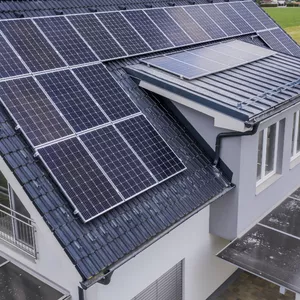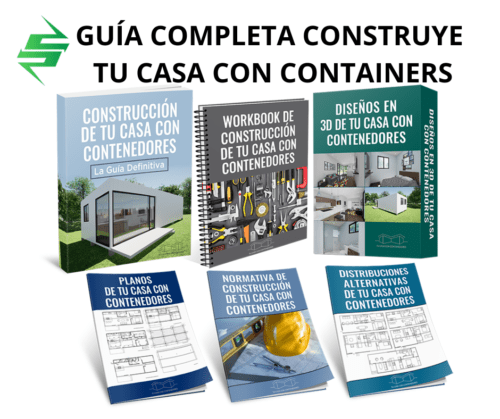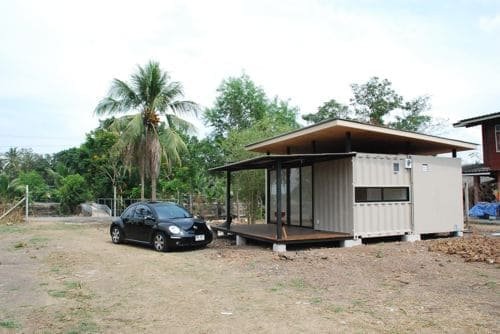Many people have the false belief that containers are bulletproof and rustproof. While many general-purpose containers are made of Cor-ten steel, this doesn’t mean they are corrosion-proof.
Not protecting your containers from rust can pose a significant problem when using them to build a container home. In this article, we will explore what causes rust and corrosion in container house, how to prevent this oxidation, and how to treat rust if it occurs.
What materials are used to manufacture containers?
To understand why containers can rust, we must first comprehend the materials used to manufacture containers. Containers can be made from a variety of steels. General-purpose containers, such as 20 and 40-foot containers, standard height, and high cube, are made from Cor-ten steel (also known as weather-resistant steel).
Cor-ten steel was developed by the United States Steel Corporation in 1930. Cor-ten steel was created using a group of steel alloys with the goal of creating corrosion-resistant steel. In the proper environment, Cor-ten steel can exhibit high resistance to corrosion; however, it is not entirely corrosion-proof. It can still oxidize and corrode.
What causes oxidation and corrosion in container house?
Cor-ten steel has a high level of corrosion resistance, but it only retards corrosion; it doesn’t eliminate it entirely. Cor-ten steel has greater corrosion resistance due to the development of a protective oxide film on the metal’s surface, which slows down further corrosion.
However, for this oxide film to develop, it requires alternating wet and dry cycles. The wet cycle initiates the corrosion process. The drying cycle creates the oxide layer that makes the container non-porous. The more wet/dry cycles the container is exposed to, the thicker the oxide layer becomes. Therefore, a key factor in oxidation is the climate in which the container is placed.
As we know, for containers to rust, they need to come into contact with both water and oxygen. When containers come into contact with oxygen and water, an oxidation reaction occurs. This reaction between steel, water, and oxygen causes hydrated iron(III) oxide, which we can visibly see as rust.
A container that is constantly exposed to salty sea air will rust much faster than one in a climate with alternating cycles of humidity and dryness. This is because it accelerates the oxidation reaction and also restricts the growth of the oxide film. The worst condition for oxidation is when containers have standing water on them.
Other climates to avoid for container homes include areas with salt-laden air, heavy rainfall, persistent humidity, or fog. An ideal climate for a container is one with alternating cycles of humidity and dryness, as this promotes the growth of the oxide film that limits corrosion. However, a dry climate is also suitable, but clearly not ideal, as it lacks the wet cycle.
Containers can also rust as a result of damage during transit and movement. When a container is damaged, any protective coating on the container can also be damaged or removed, allowing the oxidation reaction to occur.
When buying a used container, it is crucial to thoroughly inspect it for rust. Pay attention to any points of contact during transportation, including the sides, top, and bottom when stacked together.
Carefully check for areas that may have been damaged. Also, inspect heavily used areas, such as the doors.
Pay special attention to the bottom of the doors and the corners. The bottom of the doors can rust because they sometimes allow water to accumulate underneath them for extended periods.
For more details, read the complete guide to buying used containers here.
The importance of inspecting the container before purchase cannot be underestimated. Following our checklist will be beneficial when you are ready to buy your container.
Types of container rust
There are two types of rust in containers that you should be aware of: structural and non-structural rust. Non-structural rust can be easily treated and, while unsightly, is not a significant concern. The real concern for container owners is structural rust.
This is rust that has penetrated below the surface level and can compromise the structural integrity of the container. In extreme cases, the oxidation is so extensive that it is better to cut losses, discard the container, and start anew.
Preventing Rust and Corrosion in Containers
Since we all agree that “prevention is better than cure,” most of your effort (and money) should be spent on preventing rust in your containers, rather than waiting for it to occur before taking action. There are three key ways to prevent rust from accumulating in your containers: pre-construction, maintenance, and location.
Preventing rust before construction
One of the best ways to prevent rust formation in your containers is to properly design your container home. This means planning your construction to ensure that your containers are not exposed to adverse weather conditions more than necessary.
For example, if you live east of a mountain range and the weather blows in from the mountains, you would want to protect the side of your containers that will be most affected. You can plant trees or other large vegetation around your container home to prevent much of the rain and weather from hitting the containers. Another option would be to cover the exposed sides of your containers to prevent Cor-ten steel from being exposed.
Maintenance to prevent rust
We recommend keeping an eye on problem areas in advance as a way to prevent extensive rust corrosion. Regularly walk around your container home to inspect it. During this visual inspection, check if anything has fallen onto your container and damaged the protective layer. Look for standing water.
The most common location for standing water will be the roof. When inspecting the roof, pay special attention to dents. Unless repaired, dents can collect rainwater, which will accelerate the corrosion process.
Preventing rust at the location
As mentioned earlier, areas with salt-laden air, heavy rainfall, persistent humidity, or fog are not ideal locations for container homes. This does not mean you cannot build in these areas using containers. These types of locations require that you do not build container homes without applying additional protection to the containers. We will discuss this further later on.
Therefore, you can avoid a large amount of rust in your containers simply by selecting the right location and climate.
Treating Rust and Corrosion in Container House
There may be occasions when you couldn’t avoid rust formation in your containers. This could be due to various reasons. Perhaps you’ve just purchased used containers, and they are already rusted. However, whatever the reason, rust must be removed. Then, the container must be protected again to prevent further damage that could change the problem from non-structural to structural.
One of the best options, though the most expensive, is sandblasting the rust and then sealing and painting the container. To ensure you’ve removed the rust, you must go down to bare metal where you can no longer see the rust. Once the rust is removed, it’s essential that the container is sealed and painted. Fortunately, most of the time, sandblasting and fully restoring the container are excessive.

Often, you can remove small rust spots with a wire brush and sandpaper. Start by removing the rusted areas with the wire brush first. Use sandpaper to finish. After the rust is removed, use vinegar and gently rub it over the clean areas and let it dry. After the vinegar has dried, use marine-grade Direct-to-Metal (DTM) paint to cover the clean area. For a 20-foot container, you will need four gallons of paint to cover it, and eight gallons to cover a 40-foot container.
Summary
While containers are made of Cor-ten steel, they are not corrosion or rust-proof. Cor-ten steel only slows down the rate of rust development. The best way to maintain your containers is to prevent rust formation in them in the first place. This can be largely achieved through maintenance and regular inspections. However, small rust spots on your container can be treated individually, without the need to restore the entire container.
Have you encountered any issues with rust and corrosion in container house? Leave your comments or questions below.
 MAS INFORMACIÓN CLIC AQUÍ Construye Tu Casa con Contenedores Paso a Paso
MAS INFORMACIÓN CLIC AQUÍ Construye Tu Casa con Contenedores Paso a Paso  Es la única guía paso a paso que existe para construir tu propia casa con containers desde cero. No importa si no tienes conocimientos sobre construcción, si pensar en ello te da dolor de cabeza, si eres constructor o trabajas en una oficina. La guía está escrita para que cualquiera pueda entenderlo. Tu casa con contenedoresHágalo Usted Mismo Construye Tu Casa con Contenedores Paso a Paso
Es la única guía paso a paso que existe para construir tu propia casa con containers desde cero. No importa si no tienes conocimientos sobre construcción, si pensar en ello te da dolor de cabeza, si eres constructor o trabajas en una oficina. La guía está escrita para que cualquiera pueda entenderlo. Tu casa con contenedoresHágalo Usted Mismo Construye Tu Casa con Contenedores Paso a Paso



